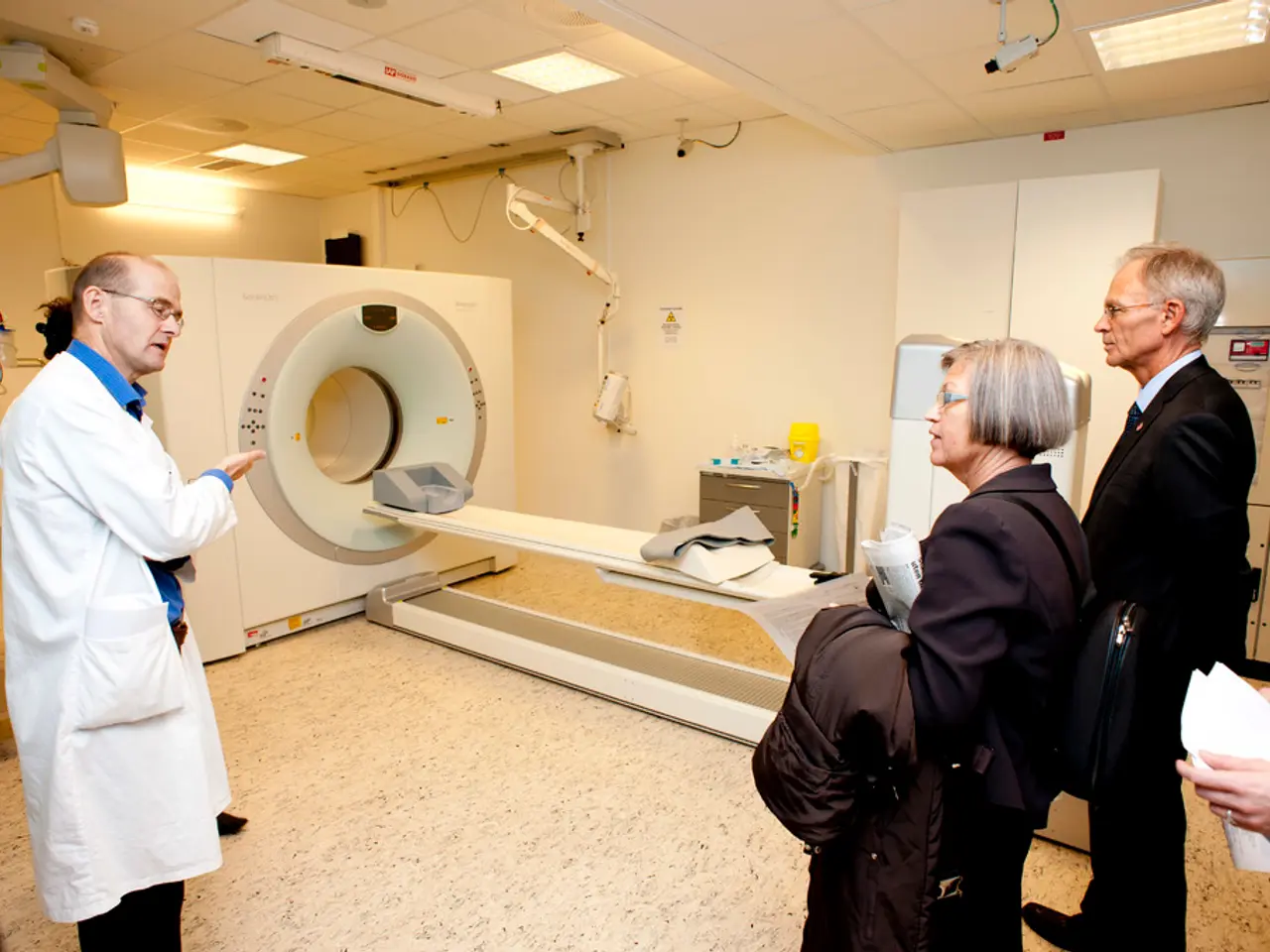Detecting Anal Cancer Through Colonoscopy: Analysis of Diagnostic Procedures
If you have concerns about the risk factors for anal cancer, it's best to consult a doctor. In addition to digital rectal exam, anoscopy, proctoscopy, and biopsy, several diagnostic tests are used to diagnose and stage anal cancer.
These tests include imaging studies such as computed tomography (CT) scans, magnetic resonance imaging (MRI), positron emission tomography (PET) scans, and ultrasounds. These imaging tests help evaluate the extent of the tumor, its invasion into surrounding tissues, and whether the cancer has spread to lymph nodes or distant organs.
A CT scan assesses the size and spread of cancer to lymph nodes or other organs, while MRI provides detailed images of the anal region and adjacent structures for tumor size and local invasion. PET scans detect areas of cancer spread throughout the body for staging purposes, and ultrasounds evaluate the depth of tumor invasion into sphincter muscles, which is important for treatment planning.
Additionally, fine needle aspiration (FNA) biopsy may be performed for sampling suspicious lymph nodes or masses outside the primary site. Molecular tests like genetics and genomics analyses of the tumor tissue can also aid in diagnosis and targeted treatment planning.
These complementary tests are essential to accurately stage anal cancer, determine prognosis, and select the most appropriate therapies.
Staging helps the doctor classify how advanced the cancer appears and plays a role in treatment recommendations. A biopsy involves taking a tissue sample from the anus to examine it under a microscope. The doctor may remove the sample through an anoscopy or proctoscopy.
If doctors find abnormalities during other screenings, they may order further diagnostic tests for anal cancer. Proctoscopy involves using a proctoscope to view the rectum and anus. Anoscopy, on the other hand, involves the doctor inserting a short tube called an anoscope into the anus to view the lining of the anus and take a tissue sample if necessary.
It's important to note that approximately 20% of people with anal cancer may not exhibit symptoms. Symptoms of anal cancer can include bleeding from the anus, pain in the anal area, a growth at the anal opening, a change in bowel habits, passing narrow stools, mucus, pus, or discharge from the anus, swollen lymph nodes in the groin, and anal itching.
Other risk factors for anal cancer include having had certain other cancers, anal warts, HIV infection, smoking, and having a reduced immunity. Infection with human papillomavirus (HPV) is the leading cause of anal cancer. However, it's important to note that infection with HPV is common, and most cases clear without developing into cancer.
After an anal cancer diagnosis, doctors may perform additional tests such as a CT scan, PET scan, X-ray, or MRI to stage the cancer or determine whether it has spread. A colonoscopy helps find abnormalities in the rectum during screenings for other conditions, but it is not typically used to detect anal cancer.
The anal canal is the short tube opening to the outside of the body, and it is the last part of the gastrointestinal tract at the end of the rectum. Treatment options for anal cancer may include surgery, chemotherapy, radiation therapy, and immunotherapy.
In conclusion, if you experience symptoms such as rectal bleeding, pain or itching in the anal area, a lump or mass in the anus, or changes in bowel habits, it's crucial to consult a doctor. Early detection and accurate diagnosis can significantly improve the chances of successful treatment.
- Consult a doctor if you have concerns about the risk factors for anal cancer.
- Imaging studies like CT scans, MRIs, PET scans, and ultrasounds are used to diagnose and stage anal cancer.
- CT scans assess the size and spread of cancer to lymph nodes or other organs.
- MRI provides detailed images of the anal region for tumor size and local invasion.
- PET scans detect areas of cancer spread throughout the body for staging purposes.
- Ultrasounds evaluate the depth of tumor invasion into sphincter muscles for treatment planning.
- Fine needle aspiration (FNA) biopsy may be performed for sampling suspicious lymph nodes or masses outside the primary site.
- Molecular tests like genetics and genomics analyses of the tumor tissue aide in diagnosis and treatment planning.
- These complementary tests are essential to accurately stage anal cancer and select the most appropriate therapies.
- Staging helps doctors classify the cancer's advancement and plays a role in treatment recommendations.
- A biopsy involves taking a tissue sample from the anus to examine it under a microscope.
- Proctoscopy helps view the rectum and anus, while anoscopy inspects the lining of the anus.
- Approximately 20% of people with anal cancer may not exhibit symptoms.
- Symptoms of anal cancer can include bleeding, pain, a growth, changes in bowel habits, swollen lymph nodes, and anal itching.
- Other risk factors for anal cancer include having had certain cancers, anal warts, HIV infection, smoking, reduced immunity, and HPV infection.
- After an anal cancer diagnosis, doctors may perform additional tests like CT scans, PET scans, X-rays, MRIs, and colonoscopies to stage the cancer or determine whether it has spread.




